FROM INSTRUMENT TO COSMOPOLITICAL FORUM
During the second semester of the Monsoon Assemblages Myanmar studio, students were set a design brief to unlock the potential of their first semester’s work. They were required to generate the architecture of a new cosmopolitical institution in which the entity they had been researching and its human interlocuters could confront each other in addressing questions of how to coexist on an increasingly damaged earth.
The brief for the semester is here: DS18_2018_Brief6
Samples of student work:
Rachel Wakelin: Tropospheric Territories
Storytelling realises anthropological concepts otherwise unseen. By engaging with the story of an everyday entity, affected by climate change, perhaps our changing environment can become more tangible. Migration patterns of birds are dramatically changing and the link to climate change is fundamental. This bird watching tower is a hybrid typology of bird watching and data display of migration and climate. The overarching intention is climatic communication, through an experiential journey intended to converge the human experience with the non-human entity of birds, through the concept of avian territories and tropospheric qualities, focusing on passive design and experiential architecture.
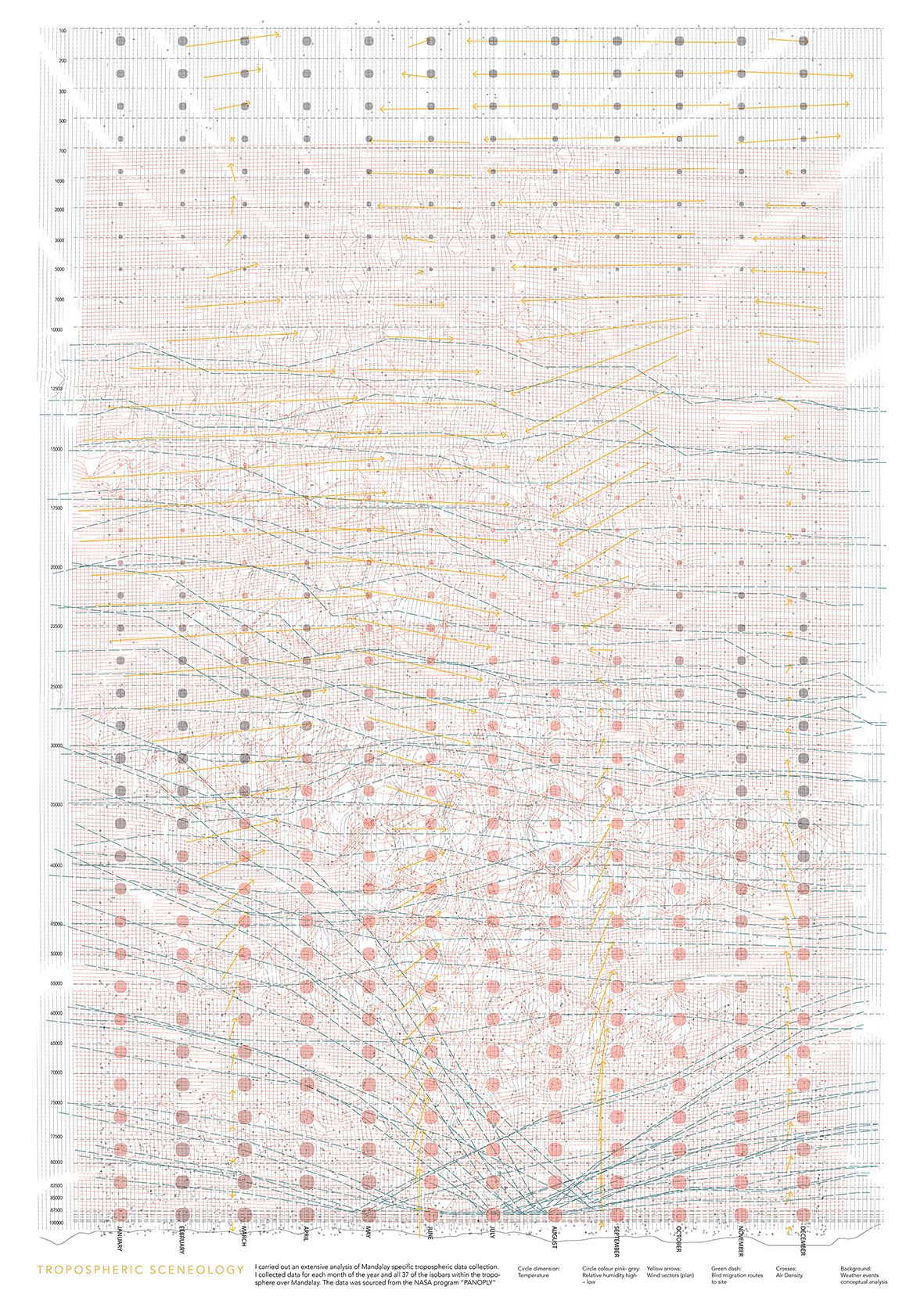
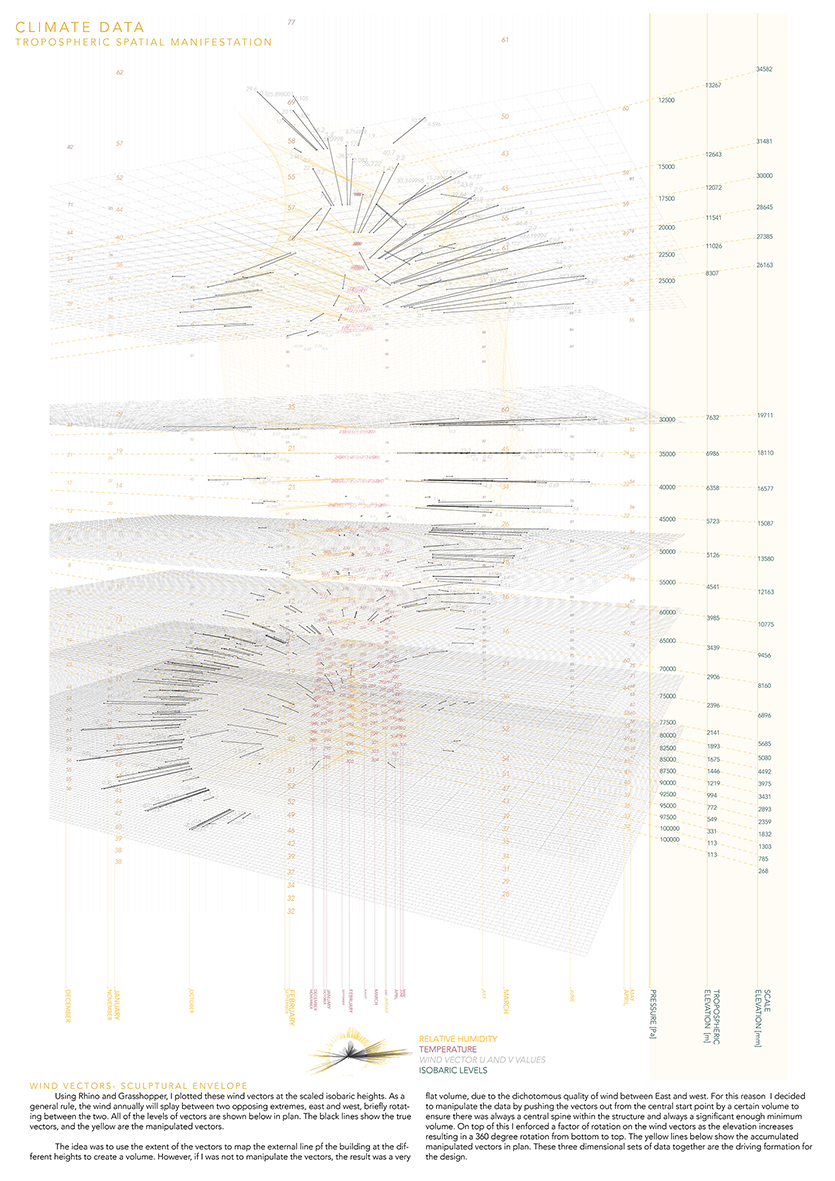
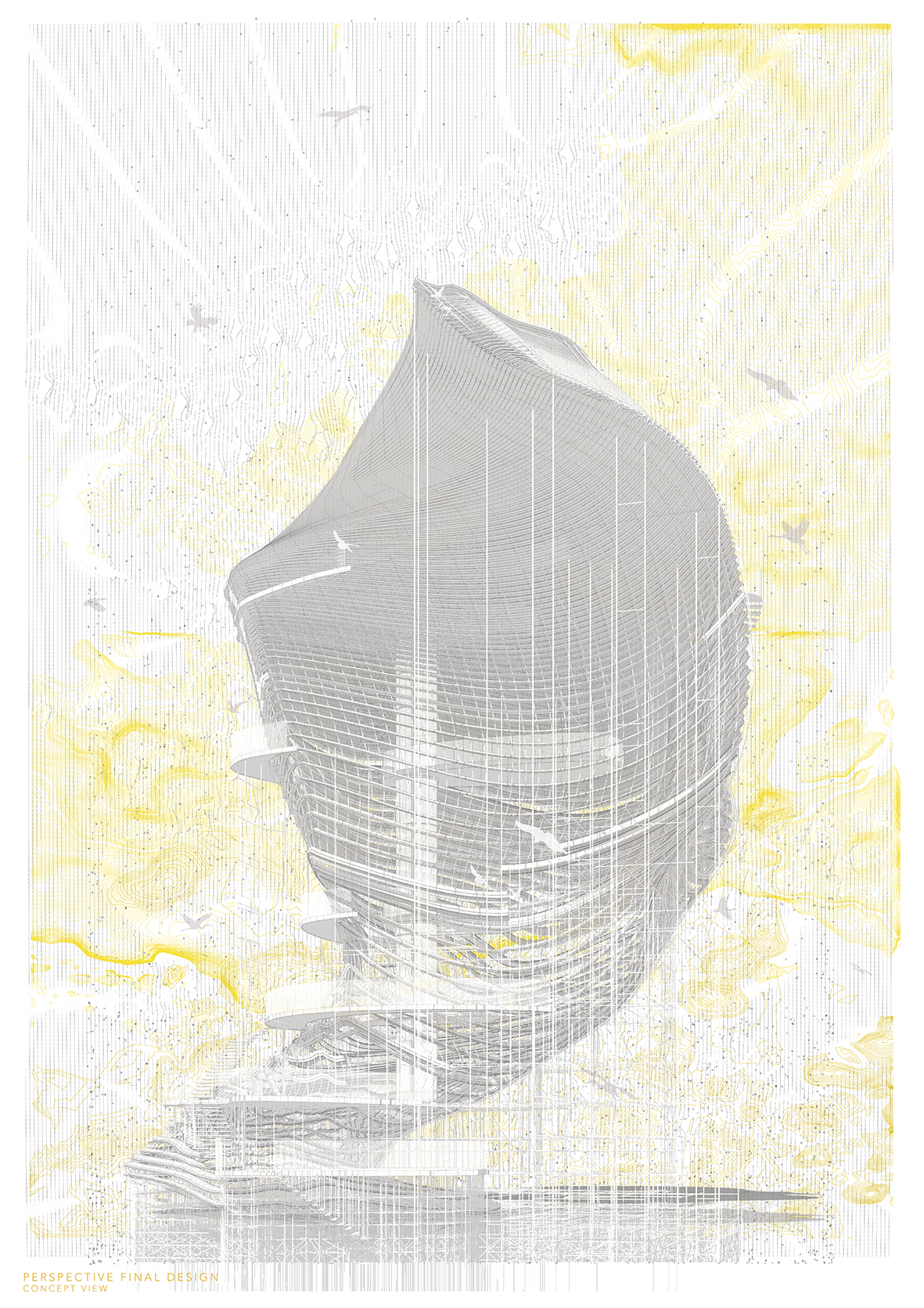
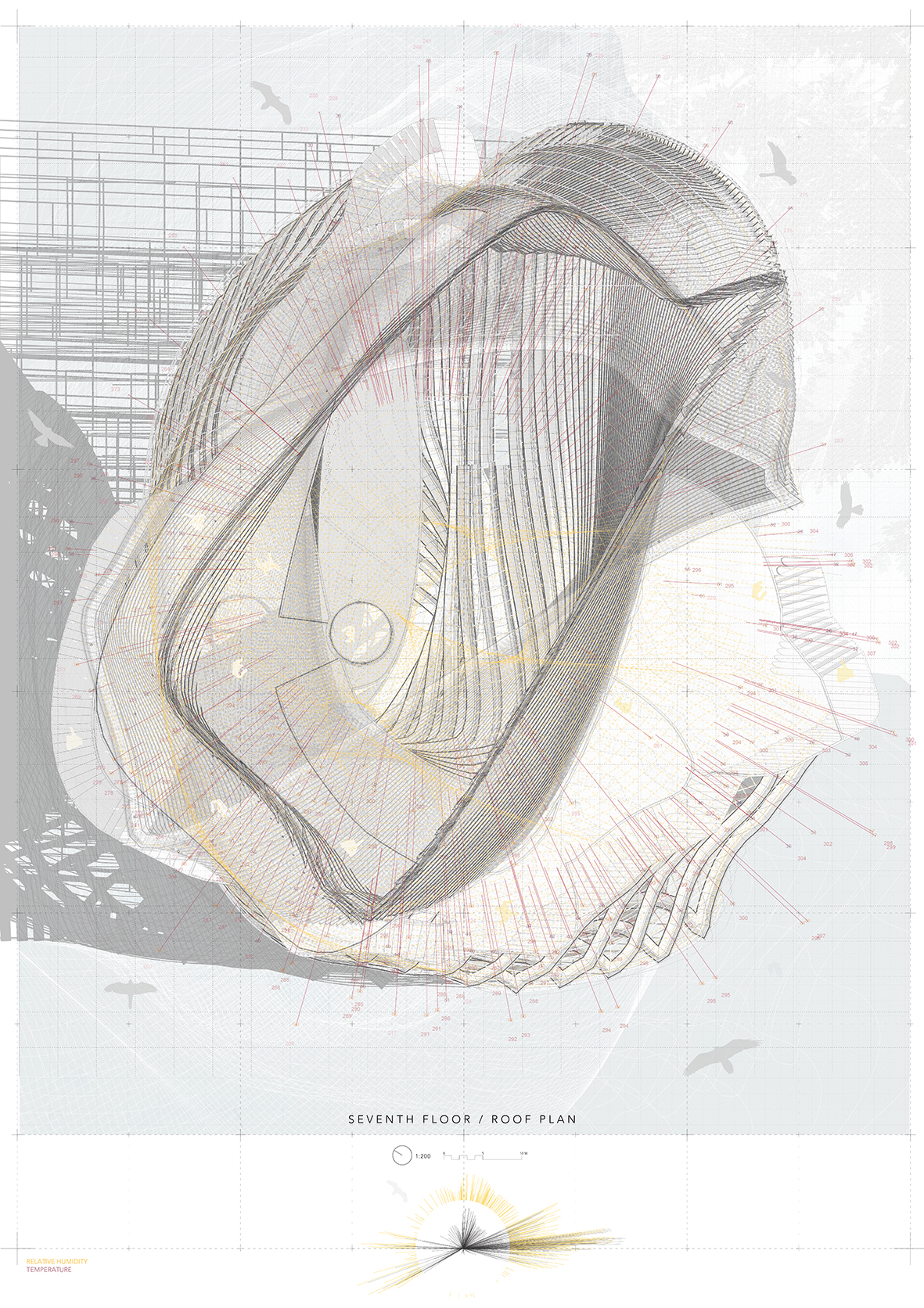
Raymonde Bieler: The Chaung Gyi Archipelago
The Chaung Gyi Archipelago aims to explore displacement solutions for the population of Chaung Gyi, a village located at the junction between the Irrewaddy river and its delta. The village loses a critical amount of land to erosion every year. The eroded sediments are transported downstream and deposited in other parts of the river. The concept of the masterplan is to harness those sediments, enabling the creation of islands and to stabilise the land to create liveable spaces for the affected communities. This new land is managed by the River Registry, a civic institution dealing with the claiming and negotiation of the land.
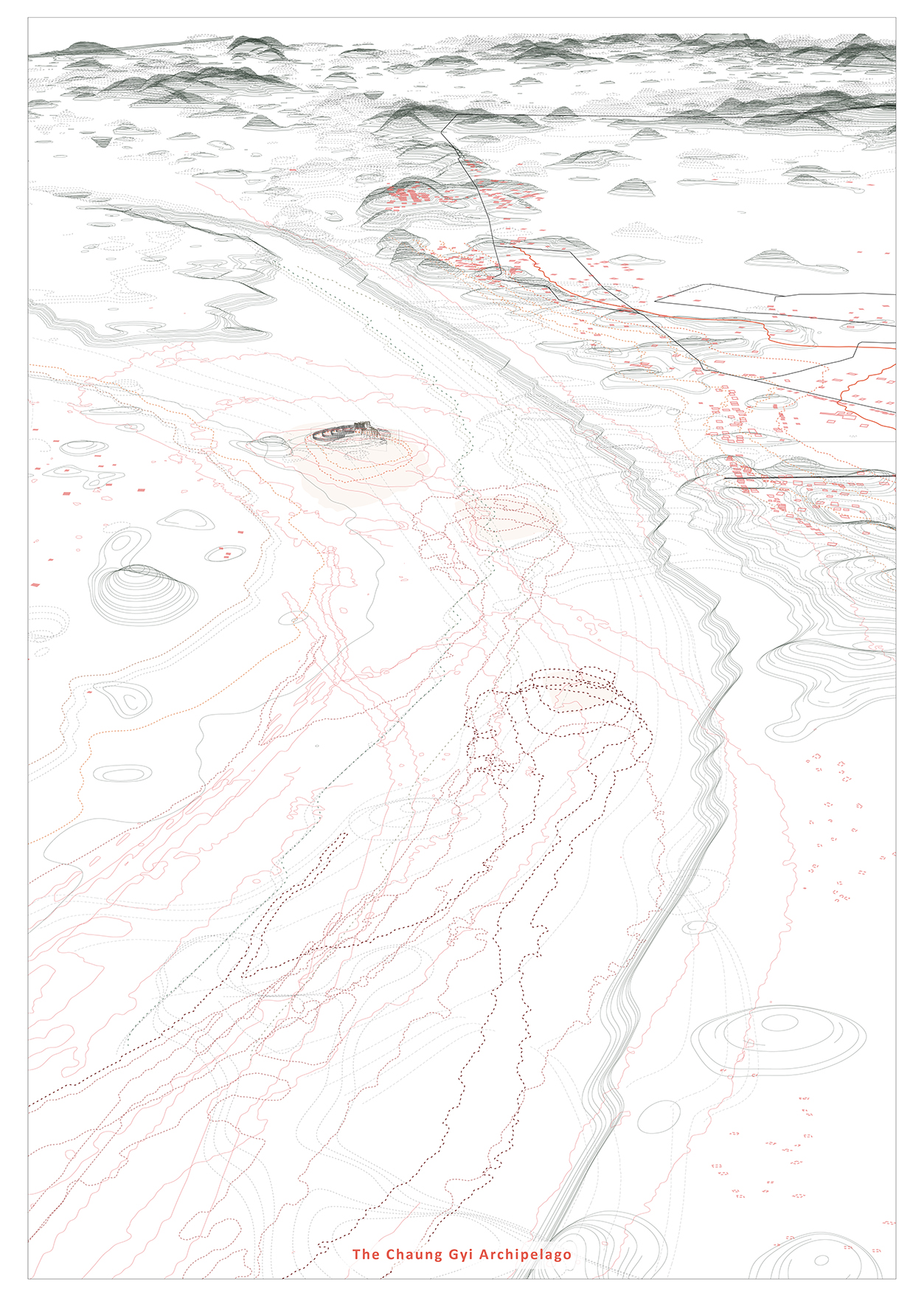
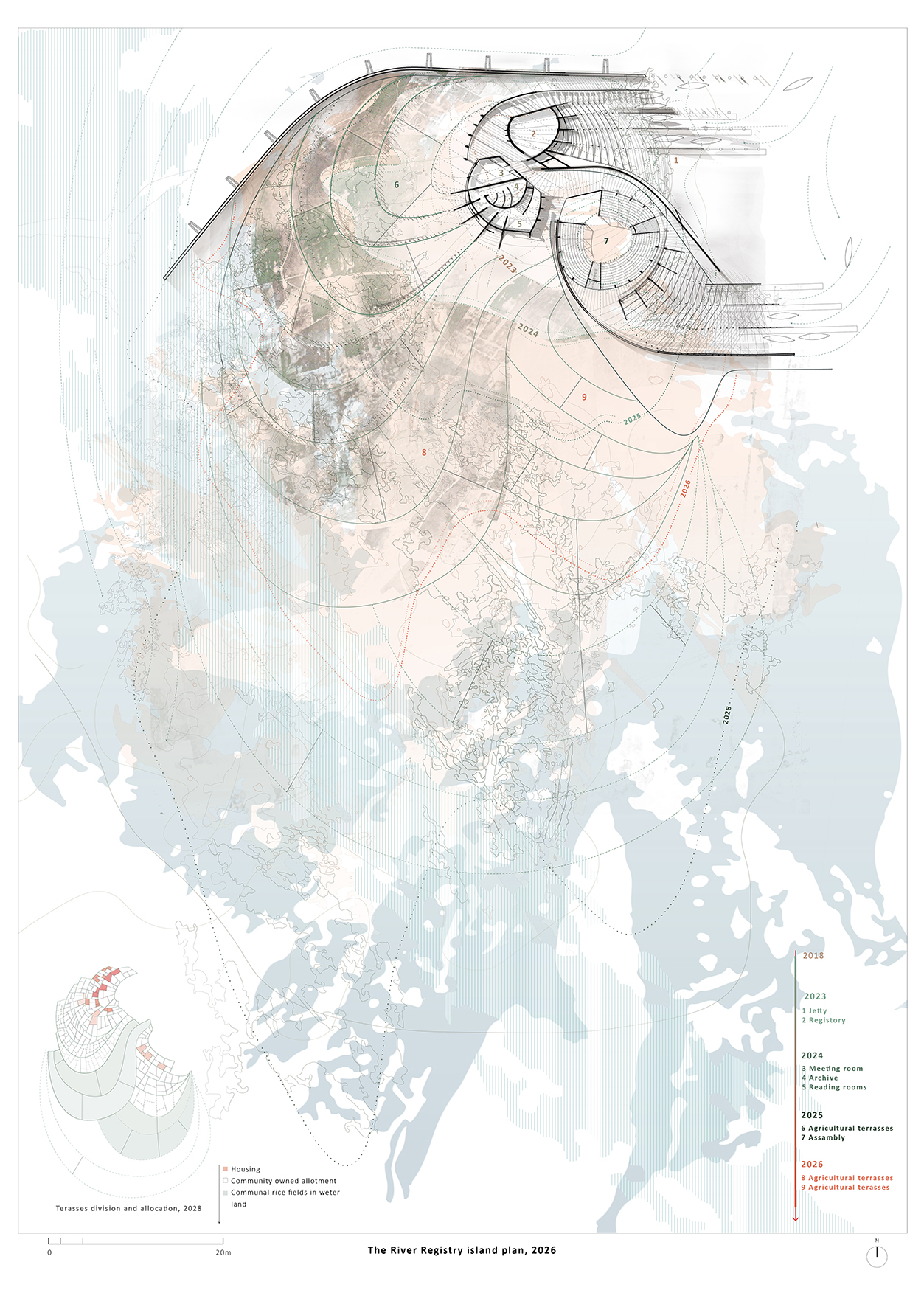
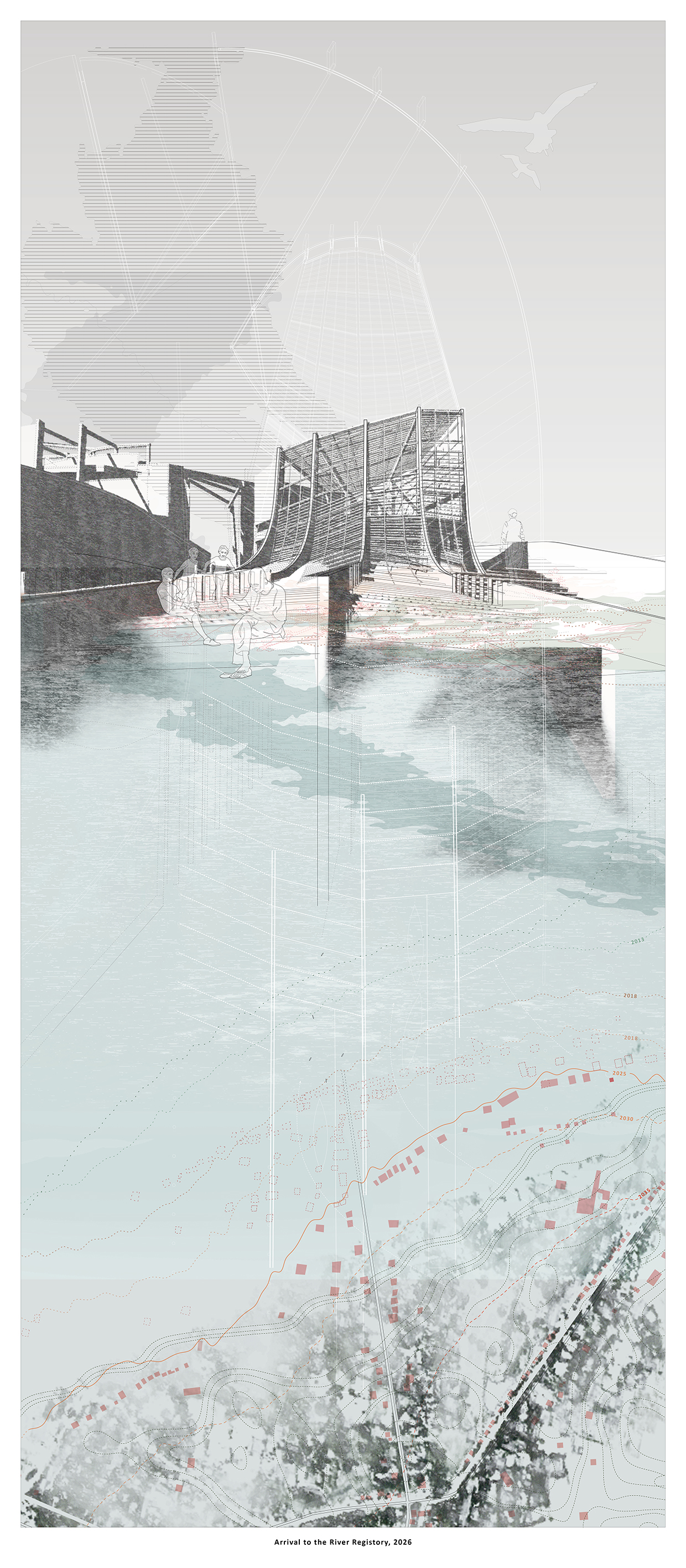
Fiona Grieve: The Shwe Recuperation Corridor
The Shwe Recuperation Corridor explores how a fossil fuel pipeline could potentially be transformed from an object of destruction and loss to an instrument of social reform and compensation. The corridor comprises a network of instruments, heat taps and tribunals that together deliver justice and raise awareness of the social and environmental impacts of foreign investment in Myanmar, focusing on the Myanmar-China Gas and Oil Pipeline in particular. The Shwe Energy Tribunal hopes to learn from and remedy some of the mistakes made during the construction of the pipeline, through the provision of services that provide an openness and clarity to an industry previously not afforded to the Burmese people.
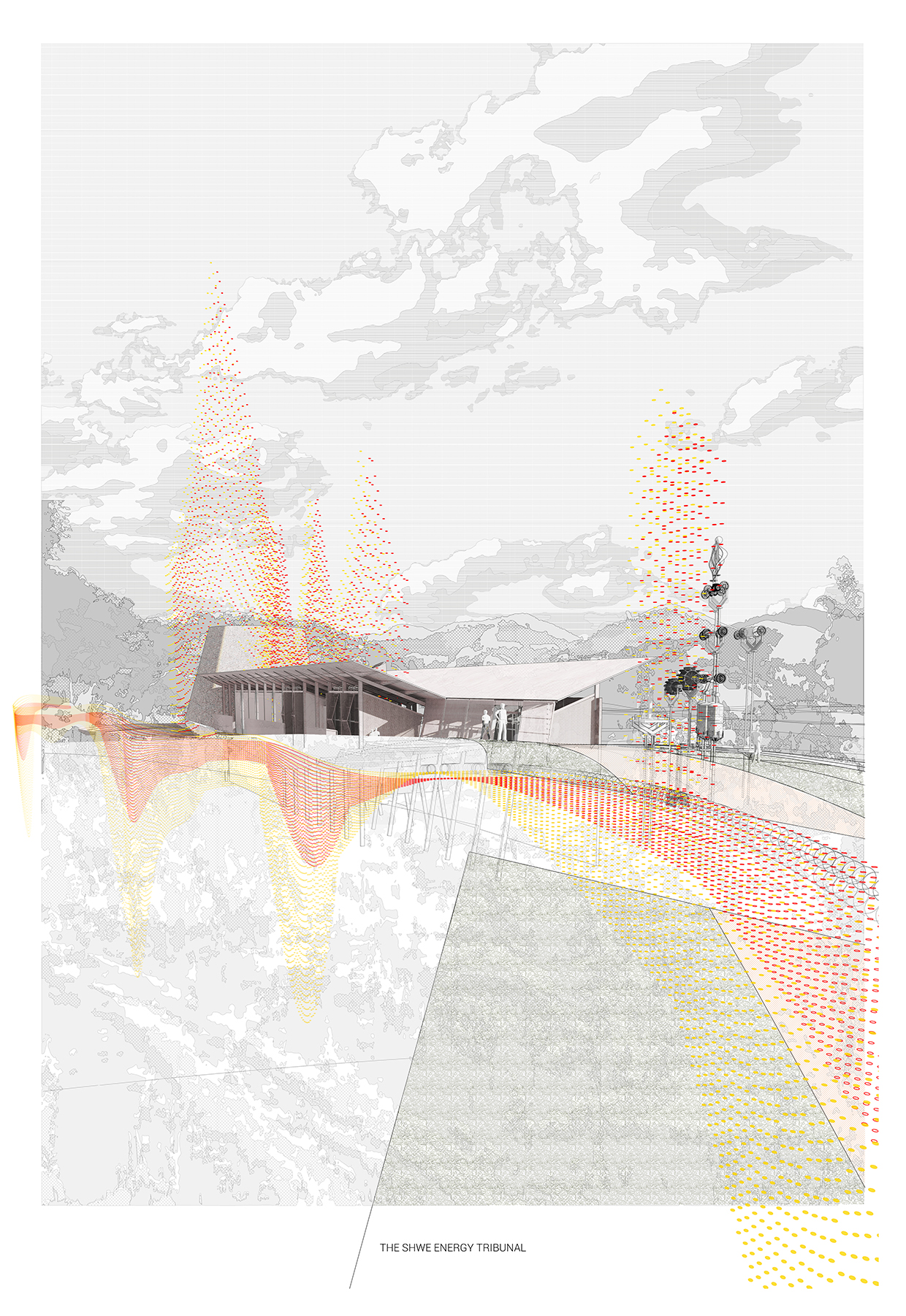
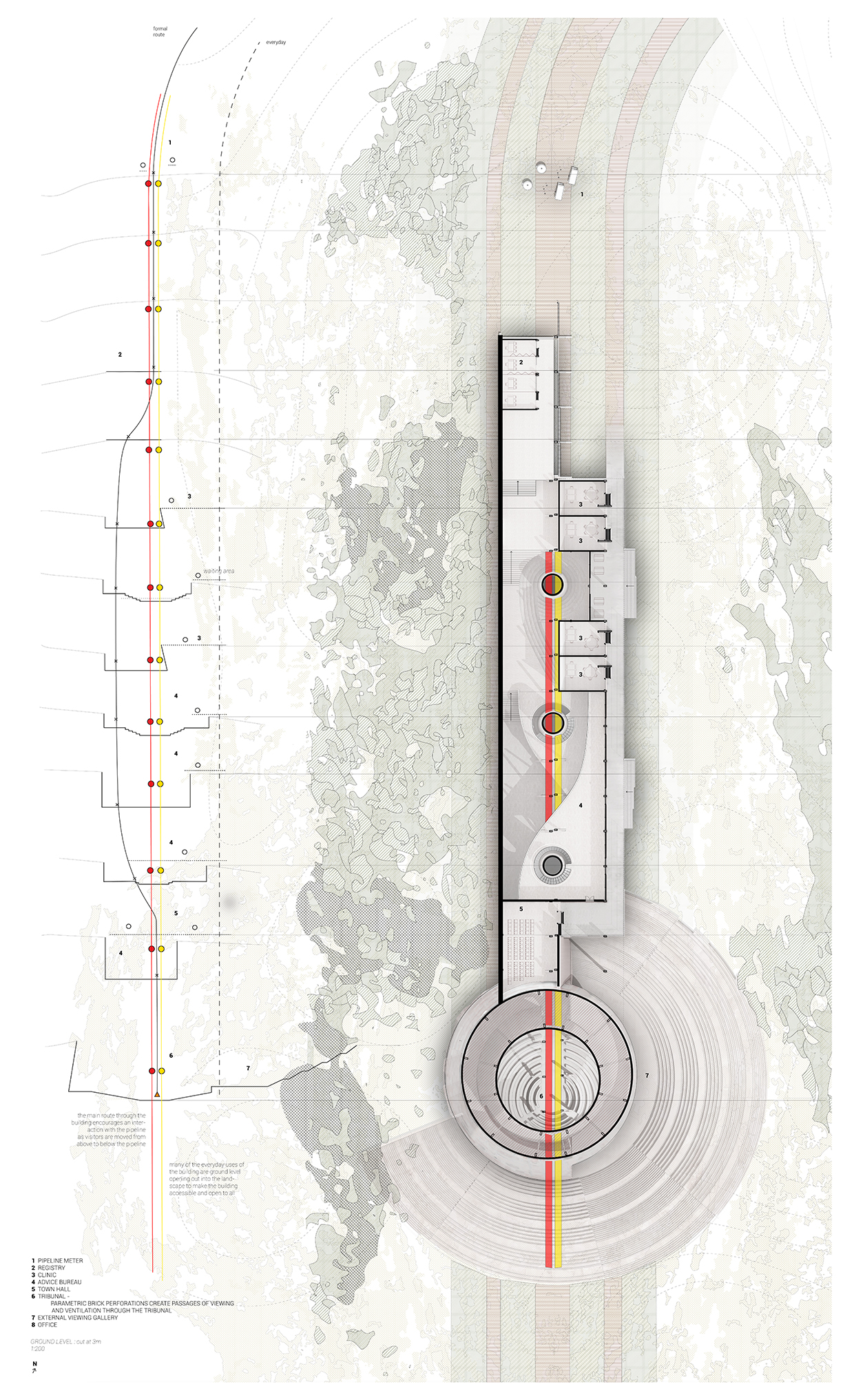
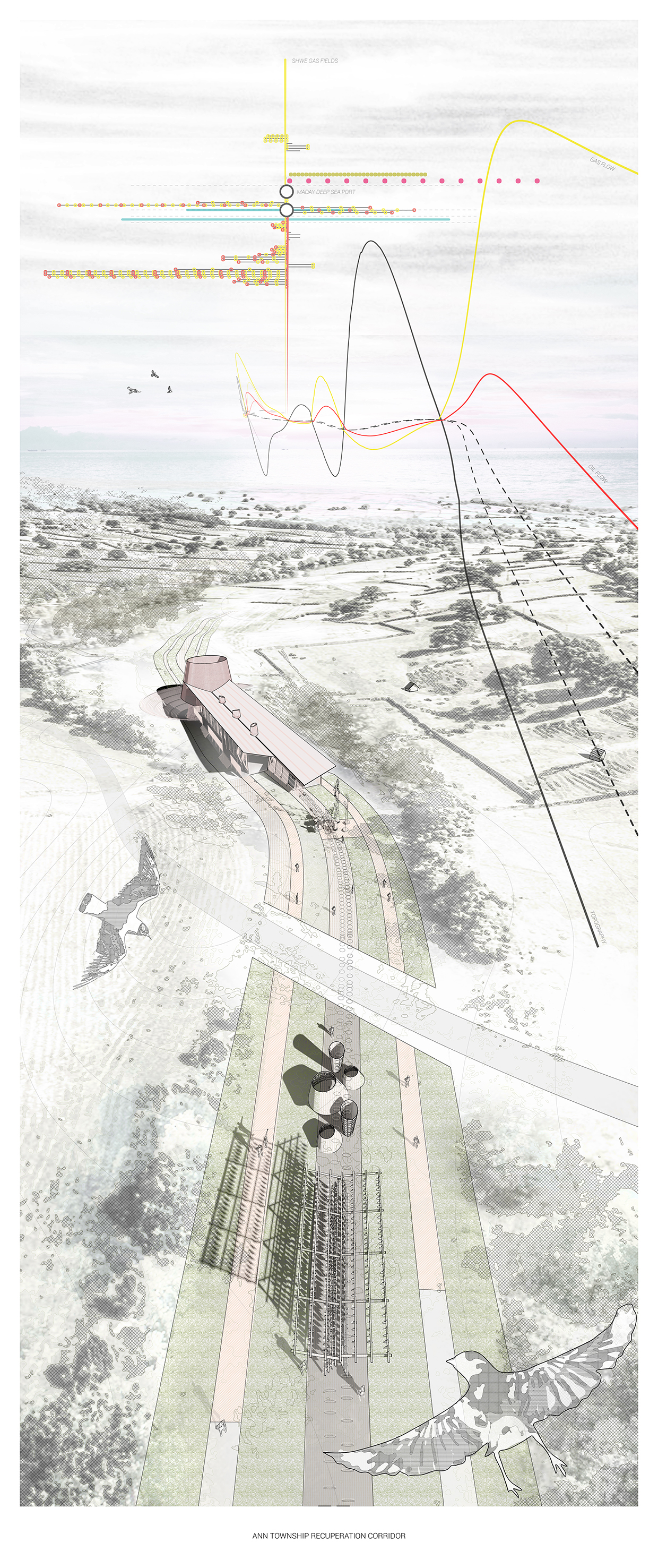
James Purchon: A New Jade Standard for Mynmar
Currently, the predominantly illegal jade mining accounts for half of Myanmar’s GDP. Set in 2050, this building will perform a series of new regulations from a previously ignored environmental management plan based on increased transparency and smaller scale jade mining. Just outside the notoriously corrupt Hpukant Township, the jade currency will be controlled by integrating all industry processes within a networked satellite system of infrastructure from mine to Hpukant and beyond. The building will begin to remediate and reflect the surrounding landscape and ecology, whilst spatially exploring the structural and geological qualities of jade and the mining itself.
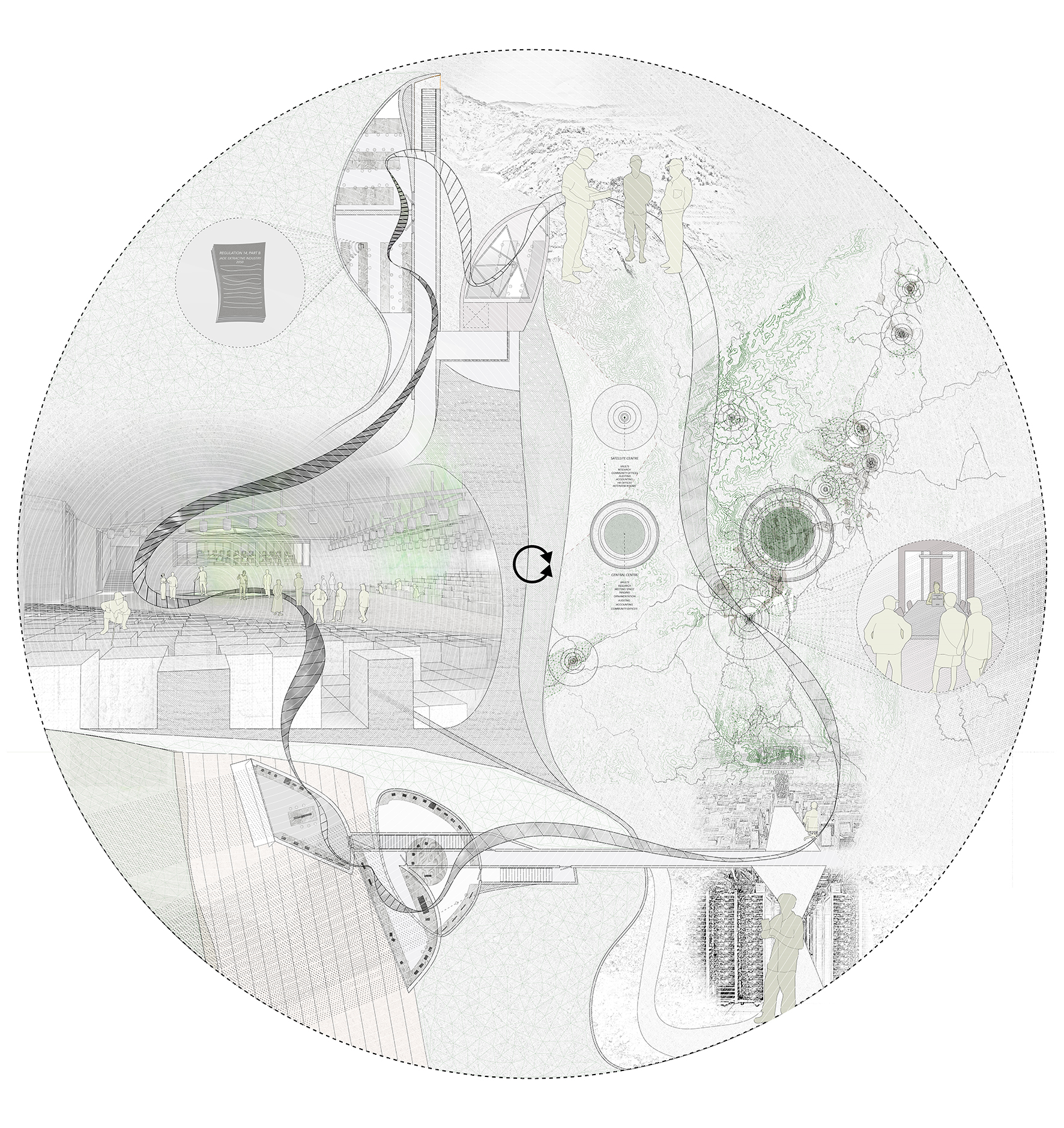

Thomas Blain: Forest Protection Outpost
The forests of Myanmar have been exposed to heavy deforestation over recent decades. This proposal aims to generate a new relationship with the forest, one where humans and the natural world interact in a system of exchange. The building acts partly as an embassy, showcasing the beauty of the natural forest and its current health. In addition, a border control filters and monitors the flow of natural resources and humans in and out of the forest. The aim of the architecture is to make use of local knowledge of the forest by placing the members of the local community at the centre of the day to day running of the Forest Protection Outpost.
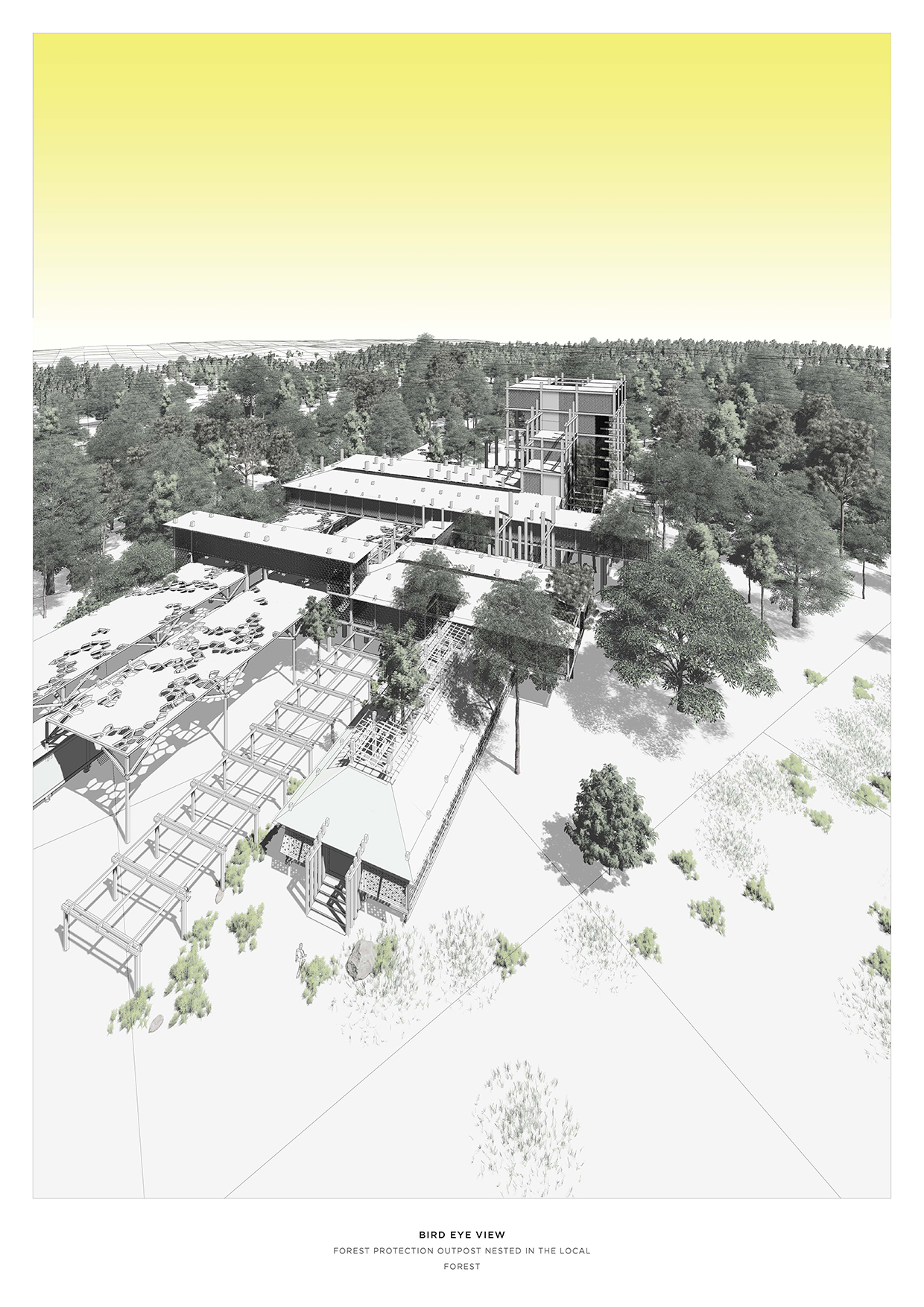
DS18 is a RIBA Part 2 studio at the University of Westminster, London, UK. DS18 Myanmar was taught by Lindsay Bremner, John Cook and Ben Pollock. It is the last of three studios associated with the ERC funded Monsoon Assemblages project (Grant no. 679873).
